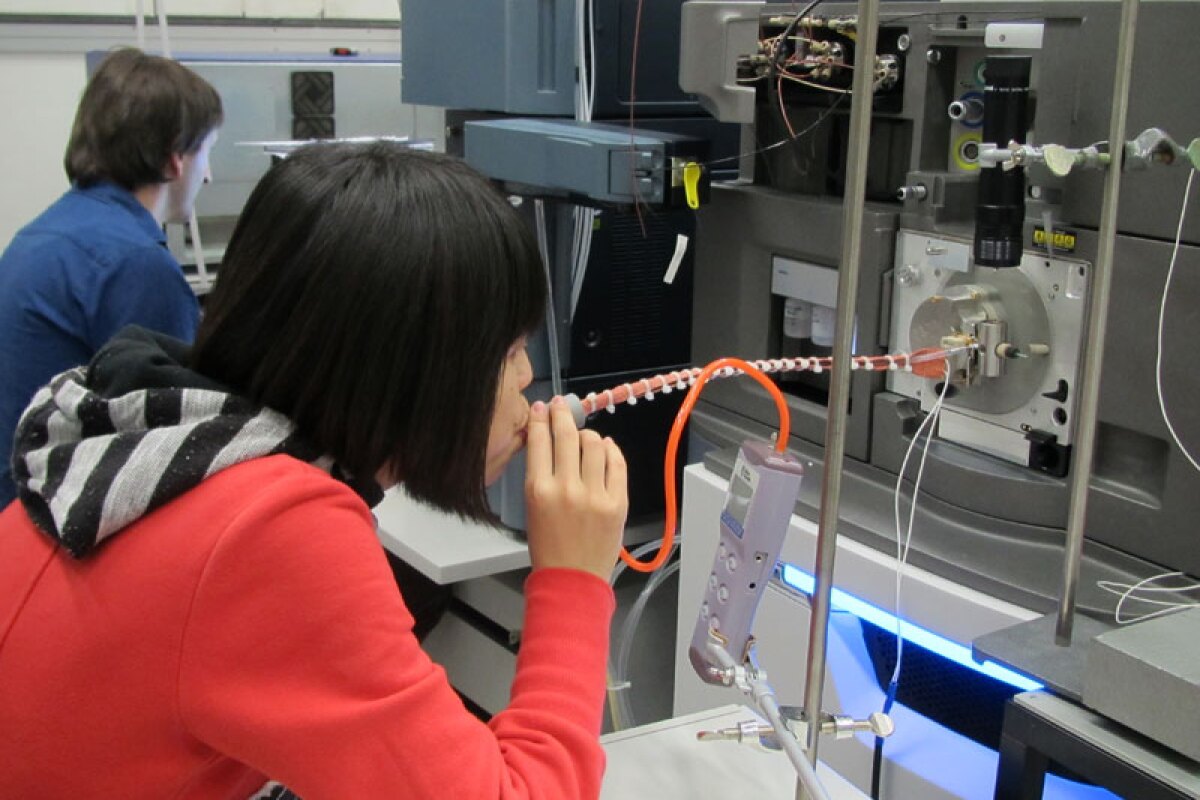Traditional Chinese medicine has long analyzed breath as a way to assess human health and in recent times state-of-the-art technology has been brought to this approach to diagnose various diseases and even stress. Swiss researchers at ETH Zurich and at the University Hospital Zurich are continuing to advance this field by developing a “breathprinting” technique using mass spectrometry that they hope will become competitive with the established analysis methods based on blood and urine.
The scientists modified commercial mass spectrometers to suit the experiment, adding a breath sampling inlet line to deliver exhaled breath from a mouth piece directly into the instrument. The researchers noted two important facts. The first is that the chemical breathprint of exhaled breath, based on volatile and semi-volatile metabolites, showed an individual core pattern. The second was that, during the 11-day test, the breathprint remained constant, making it useful for medical analysis.
Although the mass spectra method shows peaks of around 100 compounds in breath, the researchers are only able to identify acetone at this stage. The next step will be figuring out how the technology can recognize patterns of specific diseases and to achieve this they will work with doctors at the Division of Pulmonology of the University Hospital Zurich, as it's expected that patients with lung diseases are more likely to produce characteristic biomarkers.
“If we find a consistent pattern in patients with a given lung disease, we can develop a diagnostic tool”, said researcher Pablo Martinez-Lozano Sinues. If they succeed, they will expand the methodology to include other groups of diseases.
The researchers believe there are advantages of collecting a person’s "breathprint" in comparison with blood or urine samples. For one, it is readily available within seconds of collection, and exhaling into the ion source of a mass spectrometer is a non-invasive procedure. These two practical advantages could be useful to detect early signs of diseases and also monitor the progress or side-effects of a medical therapy during its course.
“Our goal is to develop breath analysis to the point where it becomes competitive with the established analysis of blood and urine”, said Malcolm Kohler, a professor at the University Hospital Zurich. To get there, the instrumentation has to be improved, since highly sensitive and accurate models currently available are too large and expensive. Small ones already exist but their performance is not up to the standard required for breathprinting.
Source: ETH Life




